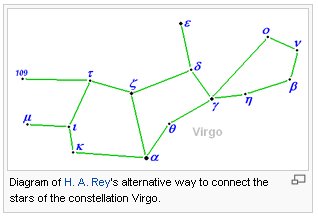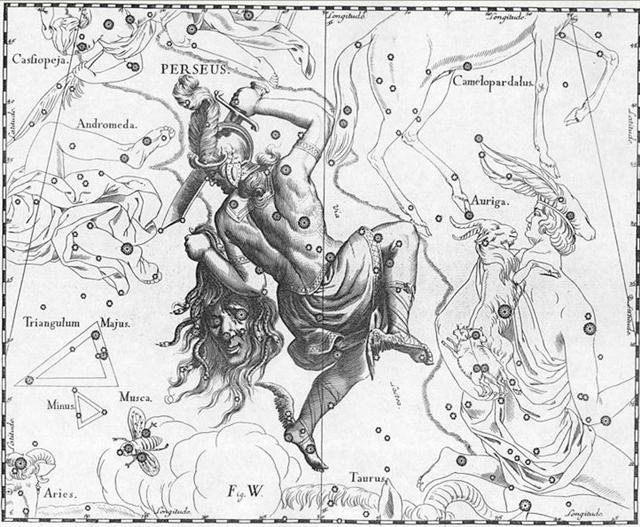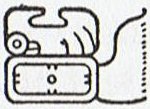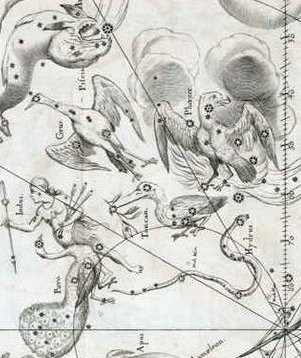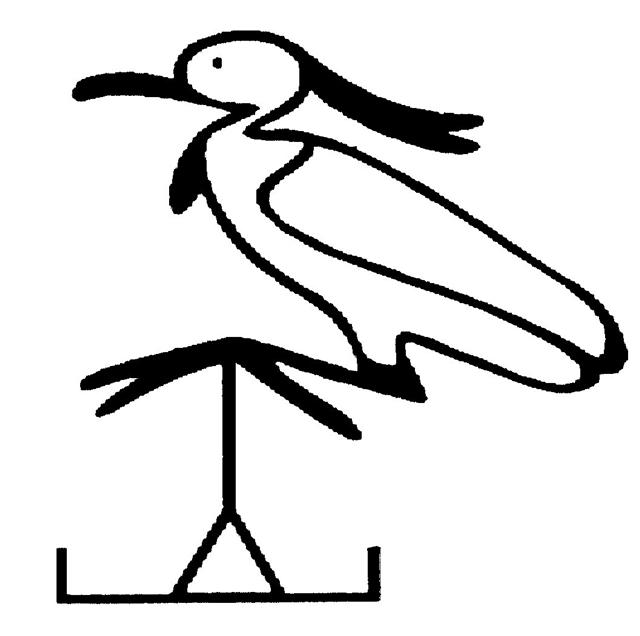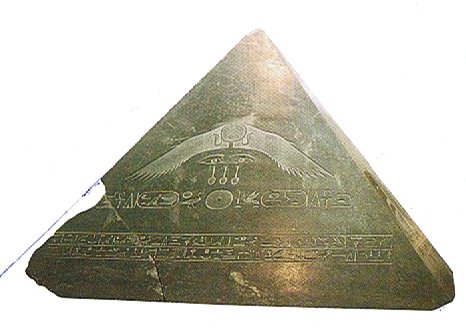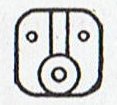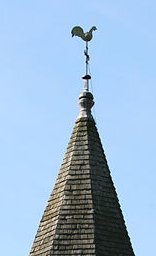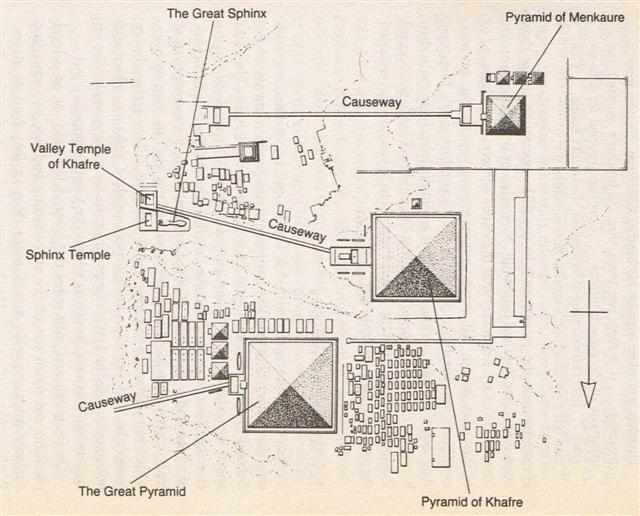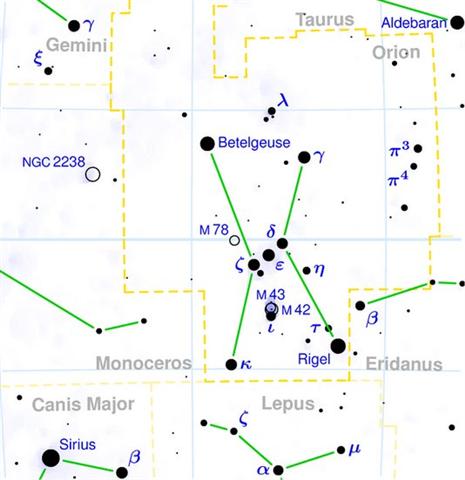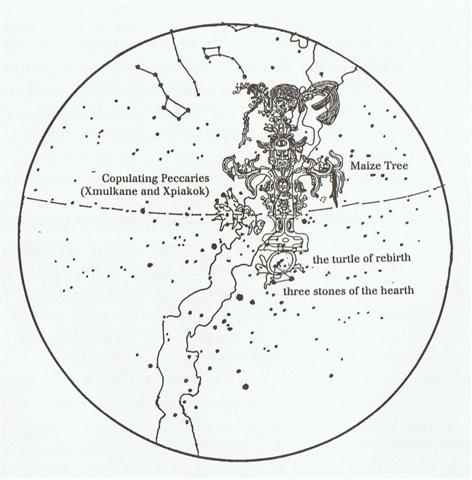There are 471 glyphs on the G tablet, which I have interpreted as a sequence of 472 days (including a day zero which has no glyph). 472 = 16 * 29½. I have to my own satisfaction provisionally correlated, by putting in parallel, some of these glyphs with the right ascension positions of heliacal stars at the time of rongorongo. However, because the stars are distributed in a round measuring ca 365¼ right ascension days some star positions have to come twice in the text. I have suggested the position of Sirrah at 0h - rather than for instance the Julian date for spring equinox in March 25 - could have been at the beginning of the text cycle:
The 'person' in Gb6-26 is similar to that in Ca3-25 which Metoro had told Bishop Jaussen represented Rogo (Lono on Hawaii):
... In the deep night before the image [of Lono] is first seen, there is a Makahiki ceremony called 'splashing-water' (hi'uwai). Kepelino tells of sacred chiefs being carried to the water where the people in their finery are bathing; in the excitement created by the beauty of their attire, 'one person was attracted to another, and the result', says this convert to Catholicism, 'was by no means good' ... ... the first month of the Moriori year, was named Rongo (Lono). On the first of the new year the Moriori launched a small canoe to Rongo, although they built and used only rude craft for their fishing excursions. The canoe was manned by twelve figures symbolizing the personifications of the twelve months. Sometimes twenty-four figures were placed in the canoe, and Skinner interprets the additional twelve as representing the female counterparts of the months. As an old Maori once remarked. 'Everything has its female counterpart.' ... A curious diversion appears in the month list of the people of Porapora and Moorea in the Society Islands, which sheds light on the custom of the Moriori who sometimes placed 24 figures in the canoe which they dispatched seaward to the god Rongo on new years day. The names of the wives of the months are included, indicating that other Polynesians besides the Chatham Islanders personified the months ... When the Sun rose together with Sirrah in March 21 (0h) it would in principle have been impossible to see this star.
But a pair of birds which could have referred to Sirrah and Bharani - both possible to see as places for birth - were documented half a year later in the text, at a time when they would have been visible close to the Full Moon and the Sun would have been in Virgo at the opposite side of the sky:
... Hamiora Pio once spoke as follows to the writer: 'Friend! Let me tell of the offspring of Tangaroa-akiukiu, whose two daughters were Hine-raumati (the Summer Maid - personified form of summer) and Hine-takurua (the Winter Maid - personification of winter), both of whom where taken to wife by the sun ... Now, these women had different homes. Hine-takurua lived with her elder Tangaroa (a sea being - origin and personified form of fish). Her labours were connected with Tangaroa - that is, with fish. Hine-raumati dwelt on land, where she cultivated food products, and attended to the taking of game and forest products, all such things connected with Tane ...
... Ecclesiastically, the equinox is reckoned to be on 21 March (even though the equinox occurs, astronomically speaking, on 20 March in most years) ... ... In Bayer's Uranometria from the year 1603 the Bird of Paradise is depicted among the constellations in the southern sky. The name Apus means 'without feet'. The great paradise birds of East India have exceedingly beautiful feathers but very ugly feet. When anciently the natives tried to sell these birds to the Europeans they therefore first cut off their feet ...
41.4 * 26000 / 365¼ = ca
2947 years before the time of rongorongo was around 1100 B.C. when Bharani (at Musca Borealis, the Northern Fly) would have
risen with the Sun at 0h.
The year 3149 B.C. - when Seven Macaw was shot down from the top of the World Tree - was 1842 + 3149 = 4991 years before the time of rongorongo, a distance corresponding to around 4991 / 71 = 70 right ascension days. 472 (days on the G tablet) - 365 = 107 = 80 (March 21) + 27 (precessional days down to Roman times) = 70 (precessional days down to the defeat of Seven Macaw) + 37 (Ga2-7) = 407 - 300.
With the exceptional Gb6-20 (408 → 40 * 8 = 320) corresponding to the nakshatra position of Sirius in June 30 - as counted from the beginning of the text on side a - it would also be in a position 70 right ascension days before the end of the text (and 320 + 70 = 390 = 30 * 13 = 403 - 13 = 14 * 29½ - 23):
... Manu-tera, the Easter Island name for the sooty tern, means literally 'sunbird'.
From this we take it as very likely, though there is no proof, that the tern would have been seen as a symbol of the sun - just as the falcon and the phoenix were symbols of the sun in ancient Egypt. The latter, the mythical Bennu bird, was associated with Heliopolis ('the City of the Sun') and with the pyramid-shaped Benben sunstone,
and was famously linked to an egg: As its end approached the phoenix fashioned a nest of aromatic boughs and spices, set it on fire, and was consumed in the flames. From the pyre miraculously sprang a new phoenix, which, after embalming its father's ashes in an egg of myrrh, flew with the ashes to Heliopolis where it deposited them on the altar in the temple of the sun god Ra. The possibility cannot be ruled out that the birdman cult of Easter Island may have expressed ideas such as these. 'If one were to propose antecedents to the practice', comments the historian R. A. Jairazbhoy: the thought of the Egg of the Egyptian sun god (the cosmic egg) would have to come to mind. The Book of the Dead says that this egg was laid by Kenkenur, or 'the Great Cackler' (an alias of the phoenix), and the deceased watches and guards it. This is declared in the Chapter headed 'Having Dominion over the Water in the Underworld'. And again the journey on the reed float across the sea is reminiscent of the journey of the Egyptian sun god Ra to the horizon on reed floats ...
... A sidelight falls upon the notions connected with the stag by Horapollo's statement concerning the Egyptian writing of 'A long space of time: A Stag's horns grow out each year. A picture of them means a long space of time.' Chairemon (hieroglyph no. 15, quoted by Tzetzes) made it shorter: 'eniautos: elaphos'. Louis Keimer, stressing the absence of stags in Egypt, pointed to the Oryx (Capra Nubiana) as the appropriate 'ersatz', whose head was, indeed, used for writing the word rnp = year, eventually in 'the Lord of the Year', a well-known title of Ptah. Rare as this modus of writing the word seems to have been - the Wörterbuch der Aegyptischen Sprache (eds. Erman and Grapow), vol. 2, pp. 429-33, does not even mention this variant - it is worth considering (as in every subject dealt with by Keimer), the more so as Chairemon continues his list by offering as number 16: 'eniautos: phoinix', i.e., a different span of time, the much-discussed 'Phoenix-period' (ca. 500 years). There are numerous Egyptian words for 'the year', and the same goes for other ancient languages. Thus we propose to understand eniautos as the particular cycle beloning to the respective character under discussion: the mere word eniautos ('in itself', en heauto; Plato's Cratylus 410D) does not say more that just this. It seems unjustifiable to render the word as 'the year' as is done regularly nowadays, for the simple reason that there is no such thing as the year; to begin with, there is the tropical year and sidereal year, neither of them being of the same length as the Sothic year. Actually, the methods of Maya, Chinese, and Indian time reckoning should teach us to take much greater care of the words we use. The Indians, for instance, reckoned with five different sorts of 'year', among which one of 378 days, for which A. Weber did not have any explanation. That number of days, however, represents the synodical revolution of Saturn. Nothing is gained by the violence with which the Ancient Egyptian astronomical system is forced into the presupposed primitive frame. The eniautos of the Phoenix would be the said 500 (or 540) years; we do not know yet the stag's own timetable: his 'year' should be either 378 days or 30 years, but there are many more possible periods to be considered than we dream of - Timaios told us as much. For the time being the only important point is to become fully aware of the plurality of 'years', and to keep an eye open for more information about the particular 'year of the stag' (or the Oryx), as well as for other eniautio, especially those occurring in Greek myths which are, supposedly, so familiar to us, to mention only the assumed eight years of Apollo's indenture after having slain Python (Plutarch, De defectu oraculorum, ch. 21, 421C), or that 'one eternal year (aidion eniauton)', said to be '8 years (okto ete)', that Cadmus served Ares ... First Father was born 540 days earlier than First Mother and this distance in time could have alluded (or even referred) to the eniautos of the Phoenix: ... On the Tablet of the Cross, the Palenque account begins with the birth of First Mother six years before the Creation on 12.19.13.4.0 8 Ahaw 18 Tz'ek (December 7, 3121 B.C.) and five hundred and forty [540 = 6 * 90] days earlier, the birth of First Father, Hun-Nal-Ye, on 12.19.11.13.0 1 Ahaw 8 Muwan (June 16, 3122 B.C.). [540 + 6 * 360 = 20 * 27 + 80 * 27 = 2700.] His birth is connected to the Creation day, 4 Ahaw 8 Kumk'u (August 13, 3114 B.C.), when, according to the inscriptions, thirteen cycles ended. The text mentions an action that First Father accomplished on Creation day, but we haven't been able to decipher what it was. However, in the next clause, the Palenque scribes repeated Creation again and described it as 'it was made visible, the image at Lying-down-Sky, the First-Three-Stone-Place' ...
The date given as June 16 could then correspond to the time of Bharani (she may have been the First Mother),
because at her ancient time there was a Heap of Fuel in "June 10 (Ga2-28) followed by a Bright Fire (Ga3-2) and bird designed like a flame (Ga1-3).
29 (= 70 - 41) right ascension days earlier than when Bharani had been at 0h (i.e. ca 1100 B.C.) would have coincided with the end of the previous creation, when in 3149 B.C. Seven Macaw had been dethroned. 3149 is approximately equal to 29 * 71 + 1100 = 3159. At the end of the previous creation the bird like a flame (Ga3-3) would have risen with the Sun in 16 MAY (alluding to May 16 when Alcyone in the Pleiades was rising with the Sun).
There is no obvious heliacal star at Ga3-3 which might explain the bird on fire, but 16 MAY (alluding to May 16 and Alcyone) could explain why there once upon a time had been imagined that a magnificent single star had been here (at the other side of the year compared to the magnificent pyramid of Khufu): ... Gill gives a similar story from the Hervey group, where the Little Eyes are Matariki, and at one time but a single star, so bright that their god Tane in envy got hold of Aumea, our Aldebaran, and, accompanied by Mere, our Sirius, chased the offender, who took refuge in a stream. Mere, however, drained off the water, and Tane hurled Aumea at the fugitive, breaking him into the six pieces that we now see, whence the native name for the fragments, Tauono, the Six, quoted by Flammarion as Tau, both titles singularly like the Latin Taurus. They were the favorite one of the various avelas, or guides at sea in night voyages from one island to another; and, as opening the year, objects of worship down to 1857, when Christianity prevailed throughout these islands ...
Furthermore, we should not forget when the God of the Oak Tree (Hercules, Shu, Jupiter etc) was put on fire and when the Explorers went uphill after having reached Easter Island: ... The seventh tree is the oak, the tree of Zeus, Juppiter, Hercules, The Dagda (the chief of the elder Irish gods), Thor, and all the other Thundergods, Jehovah in so far as he was 'El', and Allah. The royalty of the oak-tree needs no enlarging upon: most people are familiar with the argument of Sir James Frazer's Golden Bough, which concerns the human sacrifice of the oak-king of Nemi on Midsummer Day. The fuel of the midsummer fires is always oak, the fire of Vesta at Rome was fed with oak, and the need-fire is always kindled in an oak-log. When Gwion writes in the Câd Goddeu, 'Stout Guardian of the door, His name in every tongue', he is saying that doors are customarily made of oak as the strongest and toughest wood and that 'Duir', the Beth-Luis-Nion name for 'Oak', means 'door' in many European languages including Old Goidelic dorus, Latin foris, Greek thura, and German tür, all derived from the Sanskrit Dwr, and that Daleth, the Hebrew letter D, means 'Door' - the 'l' being originally an 'r'. Midsummer is the flowering season of the oak, which is the tree of endurance and triumph, and like the ash is said to 'court the lightning flash'. Its roots are believed to extend as deep underground as its branches rise in the air - Virgil mentions this - which makes it emblematic of a god whose law runs both in Heaven and in the Underworld ... The month, which takes its name from Juppiter the oak-god, begins on June 10th and ends of July 7th. Midway comes St. John's Day, June 24th, the day on which the oak-king was sacrificially burned alive. The Celtic year was divided into two halves with the second half beginning in July, apparently after a seven-day wake, or funeral feast, in the oak-king's honour ...
... They all climbed to the top of the hill. They climbed up on the tenth day of the month of June ('Maro') ... They made camp and constructed a house. Kuukuu got up, worked the ground, and heaped up the earth for the yam roots. Makoi got up and began to familiarize himself with the (new) land. (This took place) on the fifteenth day of the month of June ('Maro') ... The star Covered Up (or Heaped up), viz. ζ Cancri (also named Tegmine) rose with the Sun in "June 11, a date which due to the precession had moved to July 22 (22 / 7) at the time of rongorongo.
|
|||||||||||||||||||||||||||||||||||||||||||||||||||||||||||||||||||||||||||||||||||||||||||||||||||||||||||||||||||||||||||||||||||||||||||||||||||||||||||||||||||||||||||||||||||||||||||||||||||||||||||||||||||||||||||||||||||||||||||||||||||||||||||||||||||||||||||||||||||||||||||||||||||||||||||||||||||||||||||||||||||||||||||||||||||||||||||||||||||||||||||||||||||||||||||||||||||||||||||||||||||||||||||||||||||||||||||||||







